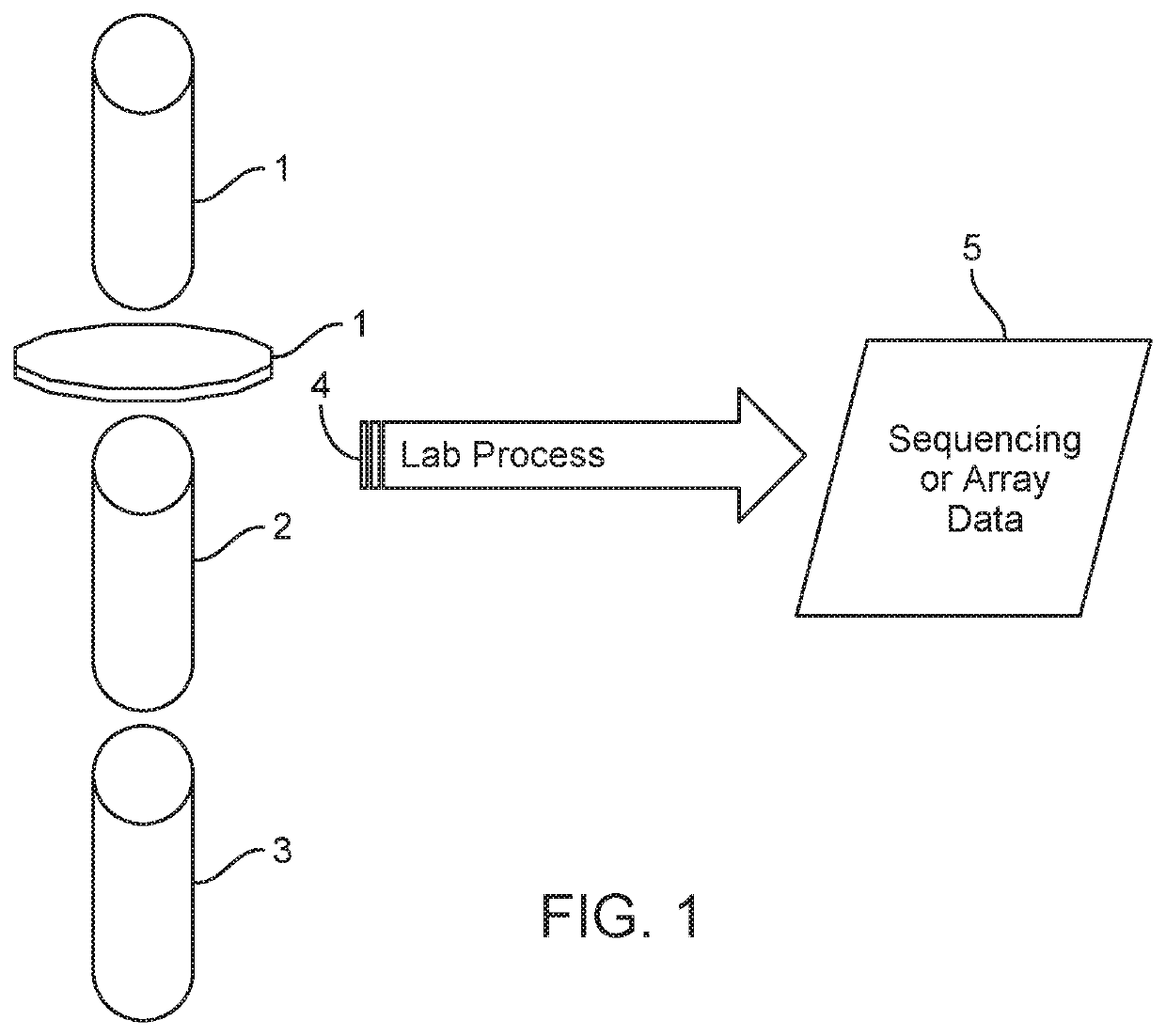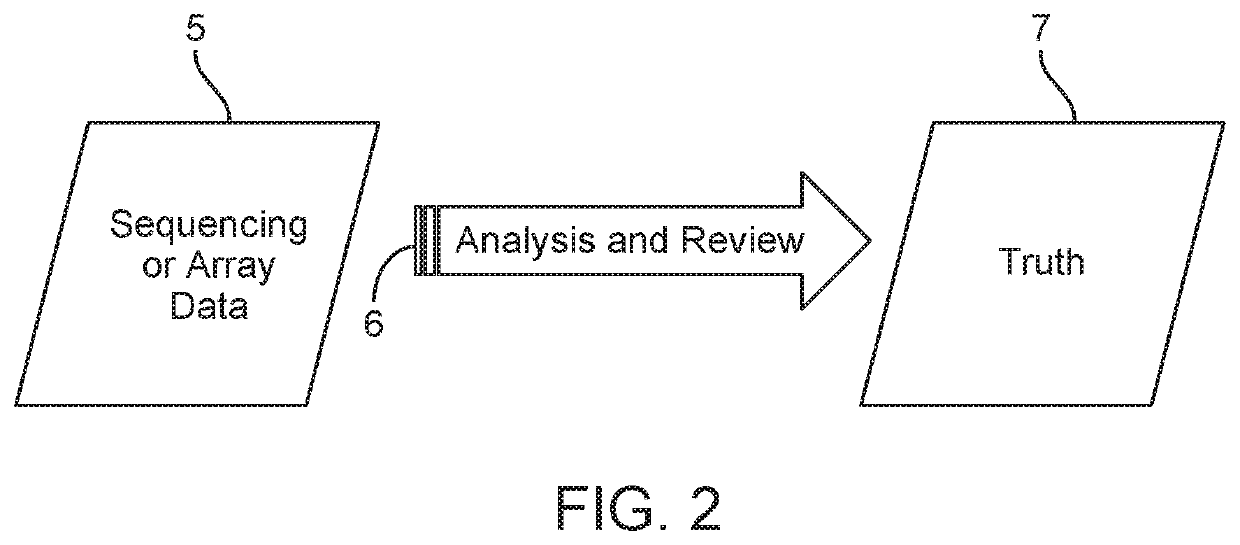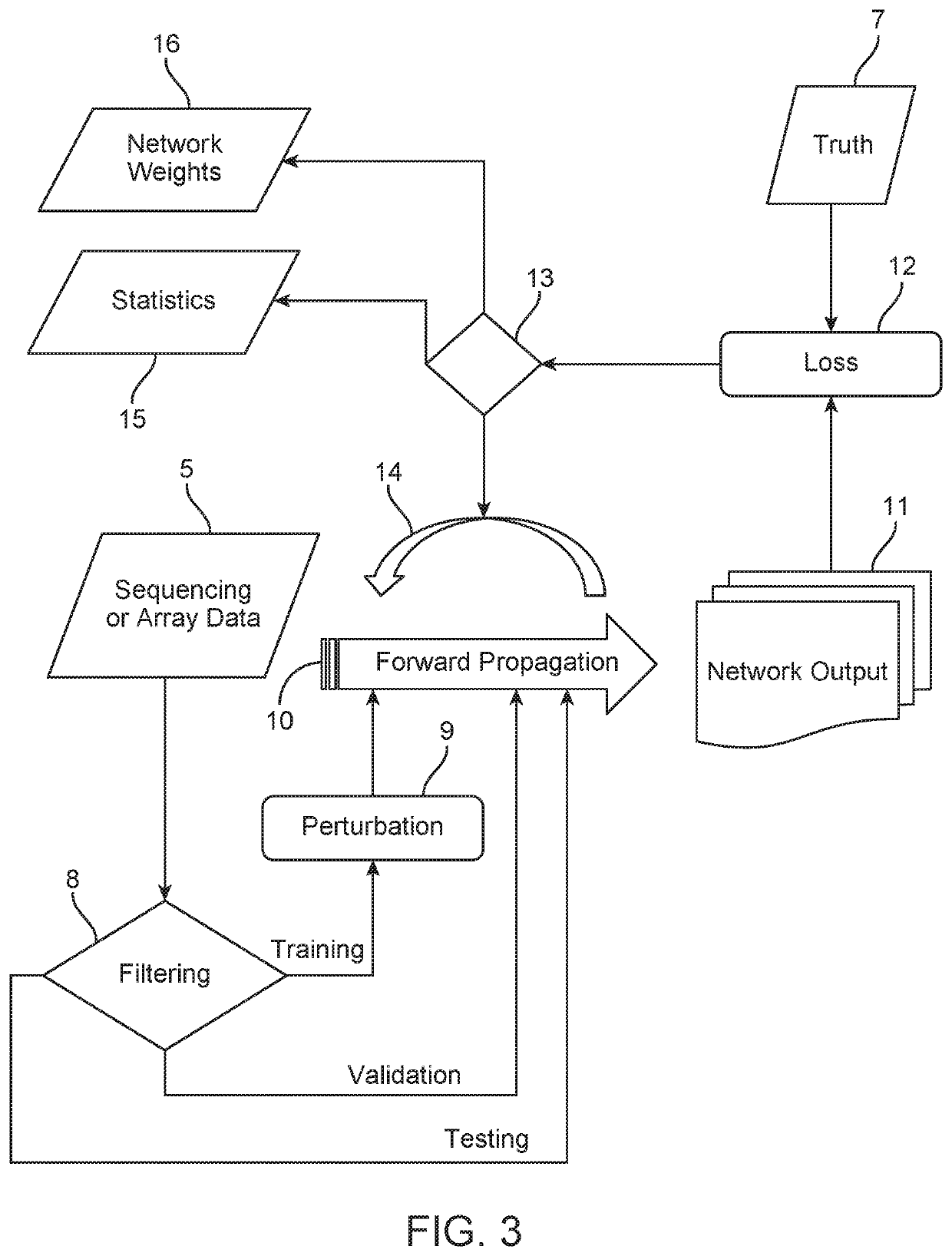Methods and systems for calling ploidy states using a neural network
a neural network and ploidy state technology, applied in the field of methods and systems for calling ploidy states using a neural network, can solve the problems of difficult to detect such aneuploidies with granularity with regard to the location of aneuploidies, and difficult to detect such aneuploidies using conventional techniques, so as to improve the health of the embryo
- Summary
- Abstract
- Description
- Claims
- Application Information
AI Technical Summary
Benefits of technology
Problems solved by technology
Method used
Image
Examples
Embodiment Construction
[0026]The various concepts introduced above and discussed in greater detail below may be implemented in any of numerous ways, as the described concepts are not limited to any particular manner of implementation. Examples of specific implementations and applications are provided primarily for illustrative purposes.
[0027]Referring now to FIG. 1, FIG. 1 shows an overview of an example process for genotyping or sequencing a genomic or plasma sample using, for example, a Cyto12b array or a targeted single nucleotide polymorphism (SNP) pool using Next Generation Sequencing (NGS). The Cyto12b array can have, for example, approximately 300 thousand (written here as ˜300 k) SNP targets across all chromosomes, and various NGS pools may, for example, have a smaller set of targeted SNPs ranging from hundreds of genomic positions to tens or hundreds of thousands of SNPs. The input into the sequencing or array genotyping process may include one or more cells from an embryo (1 in FIG. 1), as well ...
PUM
| Property | Measurement | Unit |
|---|---|---|
| Weight | aaaaa | aaaaa |
| Length | aaaaa | aaaaa |
| Frequency | aaaaa | aaaaa |
Abstract
Description
Claims
Application Information
 Login to View More
Login to View More - R&D
- Intellectual Property
- Life Sciences
- Materials
- Tech Scout
- Unparalleled Data Quality
- Higher Quality Content
- 60% Fewer Hallucinations
Browse by: Latest US Patents, China's latest patents, Technical Efficacy Thesaurus, Application Domain, Technology Topic, Popular Technical Reports.
© 2025 PatSnap. All rights reserved.Legal|Privacy policy|Modern Slavery Act Transparency Statement|Sitemap|About US| Contact US: help@patsnap.com



